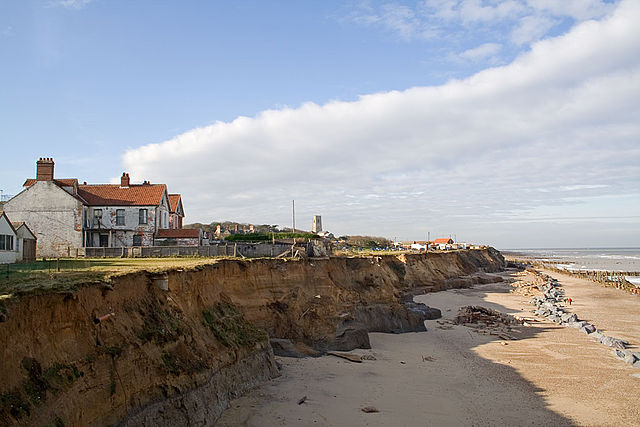Overview of Coastal Erosion
Introduction
Coastal erosion is a natural phenomenon that can be exacerbated by human activities and by storms and tsunamis. In Modules 2 and 3, we briefly touched on the natural processes of coastal erosion. We discussed the role of sediment movement and deposition in the evolution of coasts. We have also mentioned that barrier islands, an important protection for inhabited coastlines, are diminishing in size worldwide due to lack of available sediment and sea level rise. We also discussed the deterioration of the world’s deltas, including the U.S. Mississippi River delta, which is a classic example. In Modules 5-7, we looked at the erosional effects of storms and tsunami waves on coastlines, and in Module 11, we will look at specific examples of the effects of erosion and other coastal changes on the human landscape. In Module 8, we will examine the topic of coastal erosion from an engineering perspective, considering the forces at work on the shoreline and the rates of sediment gain and loss, which determine the state of the shoreline.
This shoreline is naturally retreating as winter storms in the North Sea erode the soft sediment of the cliffs. Towns such as Happisburgh are at risk as the sea cliffs erode.

We will consider the natural phenomena of coastal erosion and accretion and the human-induced changes on shorelines. We will weigh the pros and cons of the many engineering strategies (hard and soft engineering) that humans have devised to control shoreline changes. First, we will explore the concept of coastal erosion and the idea of the coastal cell by reading the article linked below.
What is coastal erosion, and when is it a problem?
Defining coastal erosion is rather straightforward. But to understand the phenomenon is far from easy. There is a widespread perception that coastal erosion is always irreversible, especially, for example, immediately after a storm event when erosion is more evident. This sometimes results in a call from both local residents and political representatives for hard engineering works to be constructed. There is little public awareness of the physics behind coastal processes that causes the difference between structural and episodic erosion. Few will know how natural coasts change due to fluctuations in forcing. And that erosion can be followed by coastal accretion when boundary conditions change, either at a seasonal, annual or much longer, geological time scale.
from Conscience-eu.net: What is Coastal Erosion and When is it a Problem?
Required Reading
Read the following sections on the Conscience website, making notes as you go, with a focus on the details of the definition of coastal erosion and the processes at work in the coastal (or littoral) cell concept:
Learning Check Point
Please answer the questions below.
